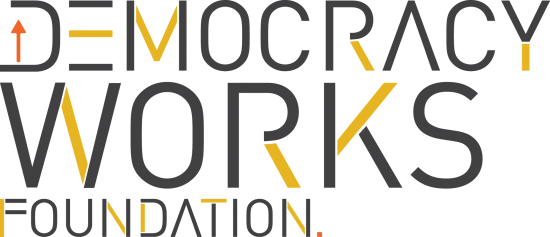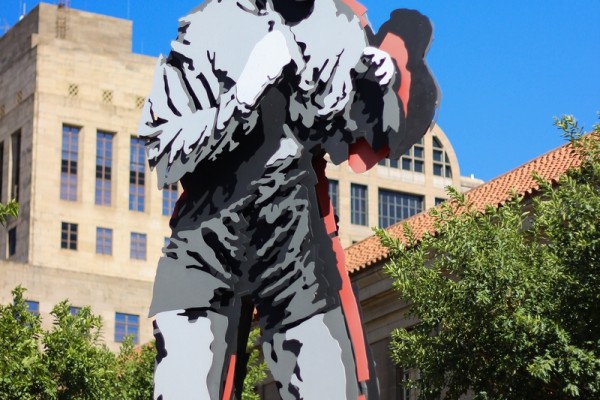The period of the Government of National Unity and the aftermath of the 31 July 2013 harmonised elections has made naked authoritarianism highly costly in light of ZANU PF’s dire efforts at re-integration into the community of nations.
The economic crisis has forced the ruling ZANU PF to make a U-turn on its using coercion as a medium of rule and governance. Interestingly, the Zimbabwean media has been awash with corruption exposés of mal-governance practices of senior public officials.
The stories have been profiled in both the public and private media. The new-found anti-corruption crusades were pioneered by the public media and the then Information Minister and now Higher Education Minister, Jonathan Moyo. The new gospel of anti-corruption came immediately after the 31 July harmonised elections, resoundly won by ZANU PF, and also in the midst of the Zimbabwe government seeking re-engagement with the Western world.
It is interesting to examine the government’s new found relationship with the media and how it impacts on its agenda setting and hegemonic construction. The government has periodically managed to manipulate the agenda of both the private and public media in Zimbabwe through selective and calibrated profiling of corruption cases. This agenda setting has fitted well into the ruling ZANU PF’s hegemonic power construction project, initiated after the 2013 elections. Anti-corruption crusades and good governance discourses have been reduced to elite power games that reflect ZANU PF’s elite factional power struggle and it seems the independent media has failed to provide a cogent response to ZANU PF’s Machiavellian tactics. This poses a threat to democratisation as there is a danger for civil society and pro-democracy actors in getting hoodwinked by the ruling party elite power circuses.
The first corruption exposés were lauded by then Information Minister Jonathan Moyo, as a breath of fresh air and heralding a new era in Zimbabwe’s politics. The state-owned The Herald newspaper stirred public anger when it exposed the rot at the Premier Medical Aid Society (PSMAS) which managed the health insurance of most public servants and general workers.The PSMAS top management raked in exorbitant salaries whilst the membership was failing to access services as service providers were not being paid. In addition, the public health insurance was reeling under massive debts. The top management’s salary package and benefits was estimated at a basic monthly salary of US$1 million.
The next corruption exposé by The Herald targeted both the City of Harare and the Zimbabwe Broadcasting Corporation where the mayor and the chief executive officer respectively were earning hefty salary packages against a background of non-payment of workers’ salaries and suppliers.The corruption scandals were infamously called Salarygate after America’s Watergate scandal. In the midst of these celebrations about the new-found role of the public media, Joice Mujuru (then Vice President) came out, guns blazing, accusing Moyo of attempting an internal regime change project.
Whilst, the media dismissed Mujuru’s rantings as offside, what they missed was the ZANU PF factional elements informing anti-corruption crusades. To the private media and civil society Mujuru was quick to condemn those who had been exposed. Interestingly, after the massive corruption exposés, a little known Air Zimbabwe employee Grace Pfumbidzayi was the only person to be prosecuted and successfully convicted. Pfumbidzayi’s case is currently under appeal and she has been given bail. Zimbabwe is still to witness any high profile prosecution or conviction given the massive corruption exposés by the Herald. The defeat of Mujuru’s (Gamatox) faction at the December 2014 ZANU PF Congress, saw a reconfiguration in the discourse of anti-corruption to mirror the new factional contours.
The emergence of the G40 Faction (aligned to Grace Mugabe) and Team Lacoste (aligned to Vice President Emmerson Mnangagwa) saw anti-corruption crusades by The Herald indicating the new power dynamics at the national publication. Minister Jonathan Moyo had been shifted to the Education Ministry, whilst Christopher Mushowe and Presidential Press Secretary George Charamba (perceived Mnangagwa allies) had taken over. This saw, Minister Jonathan Moyo resorting to social media as he no longer had the control of state owned Zimbabwe Broadcasting Holdings and Zimpapers stable. Other ZANU PF G40 members followed suit and they managed to capture a significant section of the private media and setting the agenda of public discourse in a fashion similar to the Salarygate period.
The G40 have managed to suck in some sections of the private media in its wars of position against Team Lacoste. Its arsenal included Mnangagwa’s alleged Gukurahundi atrocities. This has captured the attention of a lot of opposition members, human rights and civil society activists, and private media practitioners. As a result the pro-democracy movement has been reduced to a mere spectator and cheerleader to the perceived implosion of ZANU PF.
Allegations against both the G40 and Team Lacoste factions have been published in both the state owned and independent media. Based on authoritative and anonymous inside sources, various media houses have run a slurry of headlines heralding the end of ZANU PF, Team Lacoste or G40. Yet as of now, this has not come to pass. The apocalypse of ZANU PF was imminent yet pro-democracy activists and the private media have somehow unwittingly bought into ZANU PF’s project to sustain its dominance.
Moyo and Local Government Minister Saviour Kasukuwere led on the Twitter onslaught of Team Lacoste. Reason Wafawarova and Energy Mutodi, have captivated the Zimbabwean Facebook community through lambasting G40 and giving half baked confessions on past human rights atrocities in a bid to undermine the public standing of their nemeses. Disaffected former ZANU PF Youth League officials, Acie Lumumba, Fidelis Fengu and James Pande among others, have also been very active on Facebook, attempting to set a new agenda arguing that corruption and lack of empowerment are the biggest threats facing the youth. However, the disingenuous aspect of their argument is demonising the ministers and senior party officials whilst at the same time sanitising the Head of State and Party Leader, President Mugabe who continues to keep them in employment. Therefore, anti-corruption is carefully manipulated by ZANU PF through selective profiling corruption scandals on social or print media platforms to set the agenda of public discourse to whitewash the rot in the public sector.
The circus seems to never end as The Herald has recently been on another anti-corruption crusade that has so far targeted Indigenisation Minister Patrick Zhuwao, Power and Energy Minister, Samuel Undenge, lawmaker Psychology Maziwisa (perceived G40 members) and self-made millionaire “Sir” Wicknell Chivayo. Chivayo and Maziwisa’s alleged corruption cases all revolve around the Power and Energy Ministry, and the public enterprises under its ambit. Maziwisa has unprocedurally benefitted from dubious public relations contracts awarded to him by the national power utility company under Minister Undenge’s instructions.
The intention of the exposé is to hit on Minister Undenge, an alleged G40 sympathiser. Undenge is critical to the factional battles in Manicaland, where he is the interim provincial chairman. The story of Chivayo’s awarding of contracts and payments against the power utility company’s corporate governance norms, under the instruction of Undenge, highlights the continuing factional battles in ZANU PF. It is a fact that Chivayo, a convicted fraudster is loathed by many Zimbabweans and so is the First Lady, Grace Mugabe. Chivayo’s photos with the First Family are awash in the public media as are exposés of his corrupt deals. It cannot be discounted that the public media is attempting to cast the G40 as a political mafia only bent to plunder national resources.
Therefore, the anti-corruption reporting by The Herald has to be understood within the context of now being under the control of Team Lacoste through the influence of Presidential spokesperson George Charamba and Minister of Information, Christopher Mushowe. The re-assignment of Mduduzi Mathuthu, a Jonathan Moyo acolyte from the influential state-owned Bulawayo daily, The Chronicle, to an obscure publication in Namibia is a case in point in the never-ending ZANU PF factional operas.
The anti-corruption drives are largely more driven by factional power brinksmanship rather than the pursuit of good governance or state institutions. The new approach adopted by ZANU PF apparatchiks presents challenges to civil society and pro-democracy activists in dealing with nationalist authoritarianism. The appropriation of the anti-corruption and good governance discourse by an authoritarian regime has the danger of pro-democracy activists unintentionally participating in incumbent hegemonic construction projects whilst negating the struggle for democratising the state and society. There is need for civil society and the pro-democracy movement to reclaim the anti-corruption and good governance agenda from ZANU PF’s factions and their quest for dominance.








